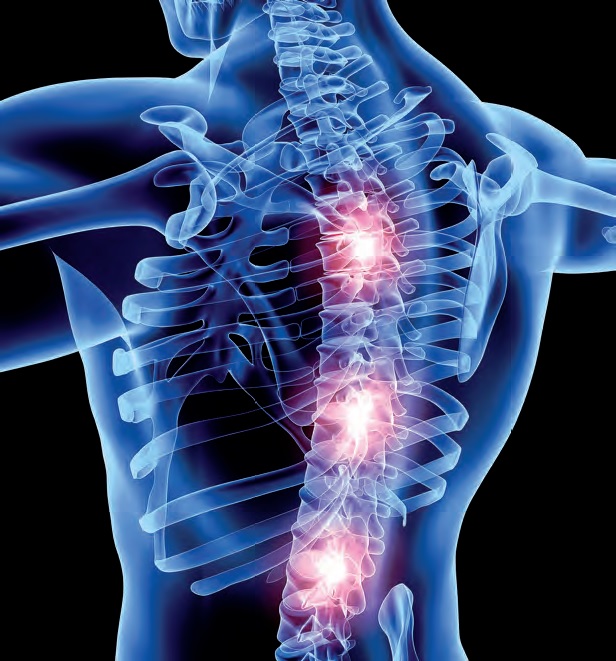(Reprinted from ResearchLIFE, Summer 2017 issue, page 9.)
Spinal Cord Research Centre
BY SHARON CHISVIN
 “YOU CANNOT FIX SOMETHING THAT
“YOU CANNOT FIX SOMETHING THAT
IS BROKEN IF YOU DON’T KNOW
HOW IT WORKS.”
THAT MANTRA, INDIRECTLY HANDED DOWN from Dr. Larry Jordan, founder of Winnipeg’s Spinal Cord Research Centre (SCRC) to its current director, Dr. Phillip Gardiner, informs all of the research that takes place at the world class U of M centre.
That research—multi-disciplinary, complex, frustrating, painstaking, exhilarating and rewarding—is currently the purview of 10 principal investigators determined to better understand spinal cord activity and spinal cord injury.
While at any given time these investigators, and their respective research teams and labs, are conducting dozens of different experiments, clinical trials and studies, they are all working towards a common objective. That objective is to restore a measure of function to individuals who have been impaired by spinal cord damage, no matter the cause, and in the process, to enhance the quality of life for those individuals.
“A large part of our goal is to understand the basics of movement so that interventions can be developed that are evidence-based,” explains Gardiner, a professor in the university’s Faculty of Kinesiology and Recreation Management and department of physiology and pathophysiology, who took over leadership of the SCRC last summer.
“Cell survival, cell regeneration, and cell replacement therapies, including stem cell use, in combination with training and pharmacological activation of specific functional systems, are some of the areas currently being pursued to restore function,” he elaborates.
The promise of restored function has been the centre’s key motivator since its establishment in 1987, shortly after Rick Hansen’s initial visit to Winnipeg during his worldwide fund and awareness raising Man in Motion tour.
In the 30 years since, the SCRC has celebrated numerous breakthroughs and successes.
“The centre’s nucleus of excellence is unparalleled,” says Gardiner, whose own research focuses on neural and neuromuscular plasticity.
“Many fundamental discoveries have
been generated by our members
over the years.”
“Many fundamental discoveries have been generated by our members over the years.”
Among many others, these include revolutionary findings about the spinal and brain control of urination, the critical role that transmitter serotonin plays in generating movement, the mechanisms by which spinal neurons can adjust their excitability during movement, and the role of electric coupling in controlling sensory transmissions.
“I should point out,” Gardiner adds, “that many of these discoveries, even those that do not appear to have a rationale for immediate application, can have unforeseen impacts.”
Research on the role of different neuron types and circuits in locomotion, for example, are currently being applied to the robotics industry.
“The uniqueness of the individual expertise of the SCRC members, who are all internationally known in the field, make the SCRC at U of M highly unique compared to other centres,” Gardiner says proudly.
And that uniqueness, of course, holds tremendous promise for everyone affected by and constrained by spinal cord damage.
